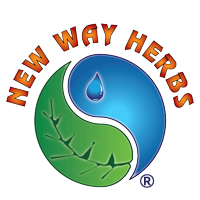Children and Herbs…A Natural Approach


There is nothing more comforting than holding a child as they overcome an illness or malady, while knowing that you got them through it naturally with minimal anxiety. Whether you are dealing with immune health issues, physical injuries, anxiety, teething, focus issues, cold and flu season or any of the many health issues that challenge your family, there is a vast array of herbs that are suitable for your children. Of course, pharma and physicians have their place and should always be part of the diagnostic and consultation process, but a well-stocked herbal medicine chest, as a part of your arsenal, is invaluable.
There are many herbal forms tinctures are the easiest form to ingest with the fastest absorption rate, by far. And, you will find, as you stock your herbal arsenal, they are often the most cost effective.
Herbal tinctures are either a glycerin base or an alcohol base. While some worry about the alcohol content, it is important to note that the alcohol content of an entire one ounce bottle of tincture is less than the alcohol content of a very ripe banana. A glycerin base will give you a sweeter taste and a thicker viscosity, but it will also have a shorter shelf life.
Thoughtfully selecting appropriate herbs is half of the battle, but getting your children to take anything, especially when they are not well, can be the real battle. Mixing your herbal formula into popsicles, juices, soups, teas or lemonade works well; and keeps your feverish or lethargic child hydrated, as well.
One of the questions most asked by parents is, “How do you measure dosage for a child”. There are several schools of thought. Young’s Rule is an equation used to calculate pediatric medication dosage based on the age of the patient, as well as the known recommended adult dose. The definition of Young’s Rule is the age of the patient, divided by the age added to twelve, all multiplied by the recommended adult dose.
Young’s Rule is an equation used to calculate pediatric medication dosage based on the age of the patient, as well as the known recommended adult dose. The definition of Young’s Rule is the age of the patient, divided by the age added to twelve, then multiplied by the recommended adult dose. This formula appears below:
Young’s Rule uses Age
[Age / (Age + 12)] x Recommended Adult Dose = Pediatric Dose
[8 / (8 + 12)] = .50 x 12 Drops = 6 Drops
Young’s Rule can be applied to quickly approach a situation in which the patient’s weight is unknown. If the weight of the patient is known, Clark’s Rule or the Body Surface Area rule can be implemented. Here is the formula:
Clark’s Rule uses Weight in Lbs.
Adult Dose X (Weight ÷ 150) = Childs Dose
Example: 11 year old girl / 70 Lbs.
20 Drops X (70 ÷ 150) = Child’s Dose
20 Drops X (.47) = Child’s Dose
20 Drops X .47 = 9.4 Drops (Round to 10 Drops)
Peruse this list of herbs that can be beneficial for a host of children’s maladies and conditions and explore the many wonderful herbs that can create a more natural healing environment for your family.
- Chamomile
- Lemon Balm
- Elderberry
- Mullein
- Calendula
- Astragalus
- Nettle
- Oat Straw
- Echinacea
- Usnea
- Peppermint
- Ginger
- Yarrow
- Hyssop
- Elecampane
- Wild Cherry
- Catnip
- Holy Basil

Comments are closed here.